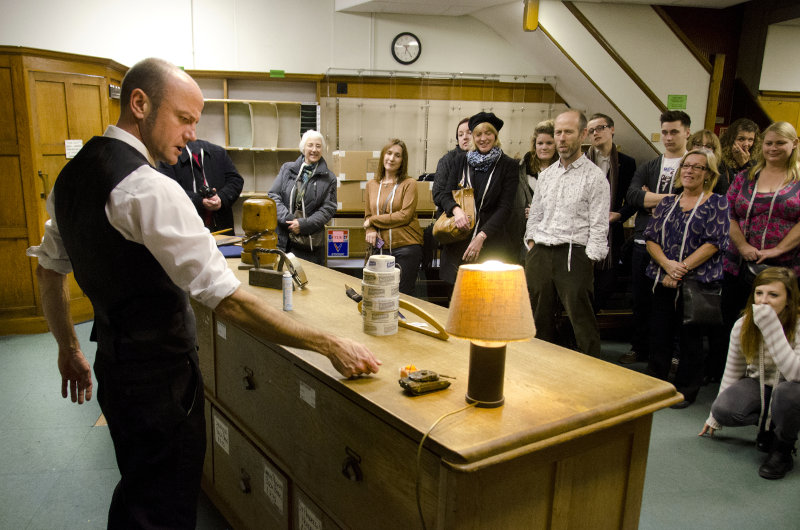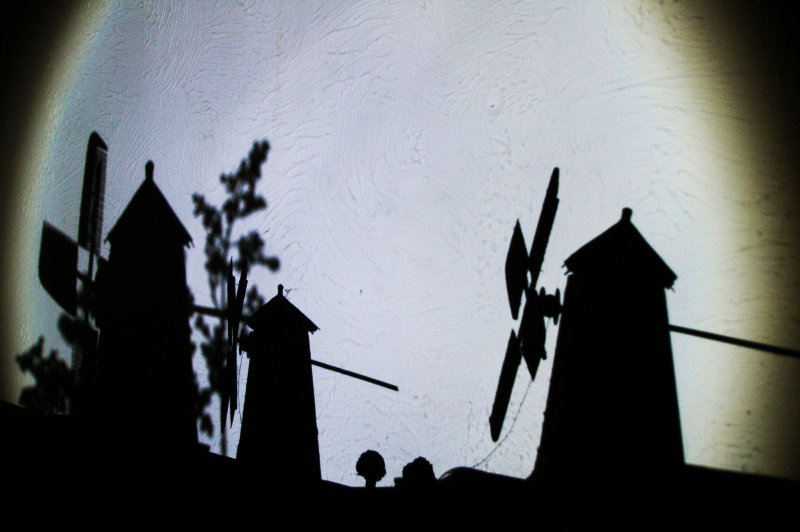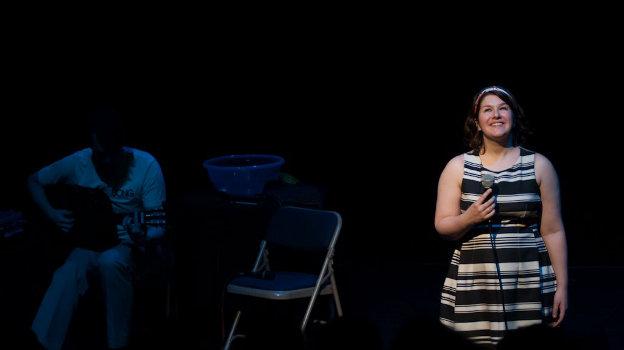For many Reading residents ‘Jacksons’ is a word synonymous with the town centre. Founded in 1875, the retail store is still independently owned and run by the family who established it. Moreover, it is run in accordance with some of the same intentions and approaches that crafted its identity a century and a half ago. In such a way, Jacksons is not only a historical site but also a living, performative history. Finally it has been sold, and is due to close its doors to the public for the last time at the end of this year.
The show Jackson’s Corner was devised by Cassie Friend (Redcape Theatre) and Benedict Sandiford to celebrate the store and mark its passing. It was produced by South Street Theatre for Reading’s annual SITELINES festival, which presents theatre in unusual spaces. Jackson’s Corner allowed audiences a promenade exploration of the physical dimensions of the store, as well as touching encounters with its less tangible aspects, such as memories and sentiments relating to its past, present, and future.
Familiar features of the store are estranged for the audience as they enter – loaded with the significance a performance event brings, and cast in an attentive, reflective light in the knowledge of the store’s imminent closure. The company’s use of space, pace and characterisation capture the passion that runs and preserves the shop, and the anticipation and reflection that takes place as it gradually closes down. Various rooms and in-between spaces are used to house short scenes, films, and images and to create particular atmospheres. Meanwhile, materials of the shop such as tape measures, mannequins, wool, and the amazing ‘money-train’ (an original, functional vacuum-operated cash system) are deployed to create a patchwork narrative connecting 138 years of history. The audience are involved intimately in the storytelling. As we gather round the counter of the menswear section, our measurements are taken, prompting recollections of the past, which fit Jacksons store into a broader social history: ’13 inches… hmmm. Number of attacks so far… Jacksons in the blackout!… We used to use the changing rooms to get some shut-eye…’
There are a few magical images for the audience to discover. At one point we are confronted with the silhouette of a woman in a 40s style dress, slowly turning a black umbrella, which is hung with multi-coloured lights. Ghosts of the past seem to emerge, to tenderly haunt our everyday. At the end of the performance Sandiford asks everyone to congregate for a photograph. As we become part of Jackson’s history and the performance ends, it is suddenly moving. A collective exhalation from the audience marks their involvement. We linger around once the performance has ended, not quite able to leave. We exchange thoughts on what Jacksons means to us. The performance will be on again for five days just before the store closes, from 17-21 December. Don’t miss out on the chance to engage with this fascinating place, and evocative performance.








